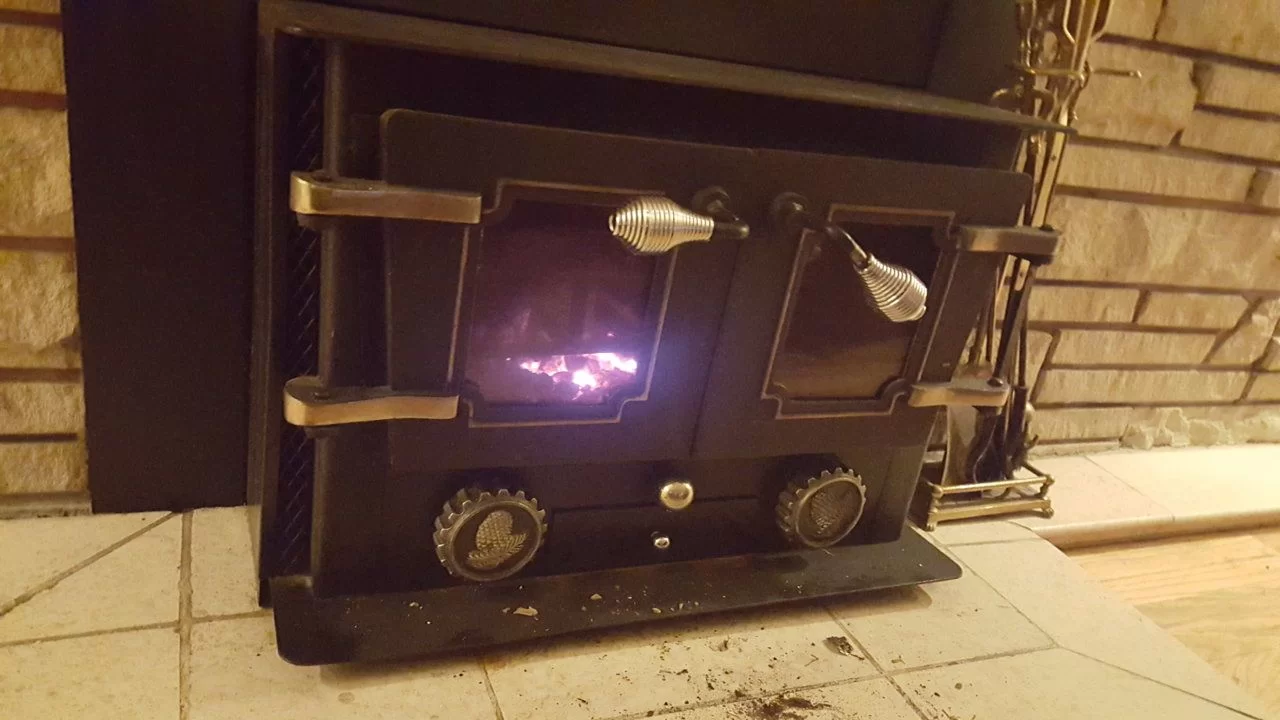Hi there! (Even if you don't recognize the stove type, I have a couple other questions, too.)
Mr. Claus and I are new to fireplace business with our first home we just purchased last weekend. We got our fireplace and our stove cleaned, but didn't find out much from the sweeper, who only offered guesses about some of their features.
Mr. C keeps loading up the stove with loads that are making me quite nervous. He likes to load in LOGS (6-9 inches in diameter, unspilt). I think that the room was feeling like a toasty 80+ degrees, as nearby rooms were at 67-69 and "felt cold" comparatively speaking.
Being a former Girl Scout and having grown up in homes with fireplaces and stoves, I only know enough to know it doesn't seem right to go to that roaring level in a smallish stove, but I don't have anything definitive to tell him. We do have a great, seasoned woodpile that came with the house, and while it's not covered, it's definitely nice and seasoned.
So, here are my questions:
Mrs. C.
Mr. Claus and I are new to fireplace business with our first home we just purchased last weekend. We got our fireplace and our stove cleaned, but didn't find out much from the sweeper, who only offered guesses about some of their features.
Mr. C keeps loading up the stove with loads that are making me quite nervous. He likes to load in LOGS (6-9 inches in diameter, unspilt). I think that the room was feeling like a toasty 80+ degrees, as nearby rooms were at 67-69 and "felt cold" comparatively speaking.
Being a former Girl Scout and having grown up in homes with fireplaces and stoves, I only know enough to know it doesn't seem right to go to that roaring level in a smallish stove, but I don't have anything definitive to tell him. We do have a great, seasoned woodpile that came with the house, and while it's not covered, it's definitely nice and seasoned.
So, here are my questions:
- Do you know anything about this kind of stove? Pictures below. There's no apparent make or model that we can see, unless I'm not looking in the right spot. It has these front "dials" that appear to control the air, one knob that is connected to the tray, and one knob that doesn't appear to do much of anything.
- What would be a good thermometer approach for this stove, since there isn't an exposed pipe?
- While I've been looking through the forums a LOT, is there one comprehensive go-to book you'd recommend?
Mrs. C.
Last edited:




![[Hearth.com] Newbie with questions: What do you know about this stove? [Hearth.com] Newbie with questions: What do you know about this stove?](https://www.hearth.com/talk/data/attachments/176/176000-4a7aae144e64e98e1cb4ead5e7643351.jpg?hash=cBVcNsR67v)
![[Hearth.com] Newbie with questions: What do you know about this stove? [Hearth.com] Newbie with questions: What do you know about this stove?](https://www.hearth.com/talk/data/attachments/176/176001-4d5ec4e7e1074bf9590944bb1c719d19.jpg?hash=M5hXjRp41I)